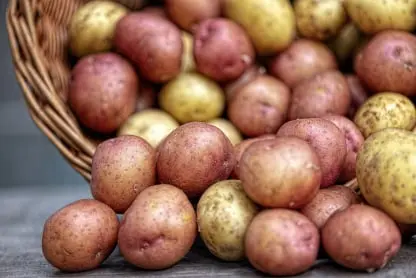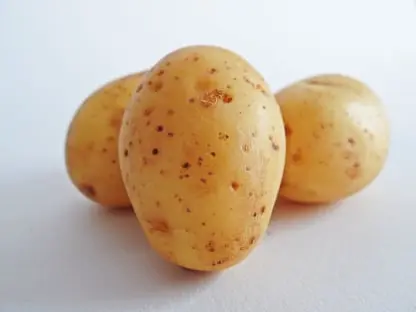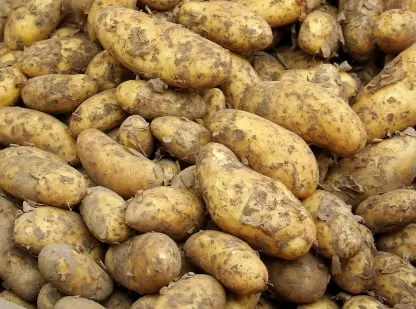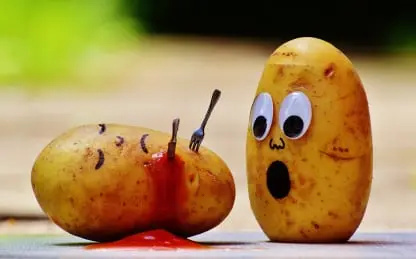Potato packing app:
Potato packing app for potato packing, potato grading and sorting, potato storage, bulk potato storage, and potato sales & distribution. Potato packing app for Inventory, traceability, sales, shipping, and potato quality inspection. Reduce potato waste, increase potato traceability, increase potato packing profit.

Potato Packing App for accurate order filling & production
View Packing App Specifications.
The farmsoft team has released a suite of Potato packing software solutions for processing, sorting, and grading of potato and potato value added manufacturing. The farmsoft potato Packing solution is designed for all sizes of pack-houses and pack sheds, and includes extensive quality control solutions based on potato quality requirements.
Potato packing solution for less waste and better potato traceability
Potato packing by farmsoft for less waste and better potato traceability in potato packing & processing space. Manage the entire potato packing process from delivery, processing (sizing, sorting, french fries manufacture, grading) thru to to sales, dispatch, and traceability & recall.
Market Report Austria, KW 13:
'Breather for potato packing companies, increasing onion exports'
The situation on the Austrian market for table potatoes has settled again after the extremely turbulent past weeks. Many households are now well stocked with food. Sales in the food retail trade have declined accordingly in recent days. In any case, the catering and wholesale trade has been almost at a standstill since the beginning of last week. Exports are also still not an issue. Uncertainty in view of the recent sales slackness does not arise however in the industry. Inventories are now quite manageable and should be sufficient for domestic supplies until the start of the early potato season. Farmers are also still willing to sell.

Potato packing app manages food safety
There is no change in prices compared to the previous week. In Lower Austria at the beginning of the week a price range of 22 to 28 Euro/100 kg depending on potato variety and quality was mentioned, whereby 25 Euro/100 kg are usually paid for wireworm-free, small packable premium goods with AMA quality seal. Prices of up to 32 Euro/100 kg were reported from Upper Austria. However, only very manageable quantities are available here. Kenya: German firm to set up seven potato packing plants
The potato sector in Nyandarua county has received a major boost after an international German firm has committed to set up seven potato pack houses. The officials of BASF, a leading chemical company, visited Nyandarua governor Francis Kimemia, where they pledged to support the project estimated to cost over Sh500 million (€4.4 mln).
The county and the company are set to sign a Memorandum of Understanding in April of this year. BASF Vice President for Africa, Michael Gotsche, expects the construction work to commence in October: “Through BASF’s Performance Material Solutions, Nyandarua farmers will be able to store their produce under hygienic and optimum storage conditions in packhouse facilities currently being developed.” He noted that a technical committee whose activities would be coordinated by Kenya Investment Authority had been formed to see to it that the project run smoothly.

Potato Packing App for reduced food & fresh produce waste
Potato packing: We understand your businesses and have been supporting potato packing businesses since 2001.
Manage the entire potato packing process from delivery, processing (sizing, sorting, French fries manufacture, grading and packing) thru to to sales, dispatch, and traceability & recall. Potato packing app manages potato deliveries, washing, sorting, packing, and potato sales (bulk and packed bags). Deduct tare of potato deliveries, pack potatoes to order, and manage potato logistics...
Potato packing by farmsoft for less waste and better potato traceability in potato packing & processing space.
Manage potato packing process for any packaging type including net bags, jute bags, film bags, woven bags, paper bags, trays, transport packaging and FIBC’s / Big Bags, 1 ton totes and more. Potato packing process:
The farmsoft solution supports many potato packing processes and can be configured to support any potato packing business. Here is an example process used in farmsoft potato packing: We are experts in the potato packing and processing space, and have performed multiple solution deployments in potato packing, potato processing, potato storage, and potato wholesaling companies in USA, Canada, and Australia.

Potato packing app manages supplier food quality and traceability
Potato packing solutions
There are so many possibilities. Therefore, it’s really helpful if someone helps you find the right solution. Not only are there a number of ways to pack potatoes, but there are also a number of methods to keep the potatoes fresh in their packaging. This helps give the potatoes a longer shelf life but also keeps them good after purchase. The longer the potatoes stay fresh, the less it will produce food waste. “JASA can help to come up with the perfect solution for our customers”, Piet Pannekeet explains. “It all depends on whether you are packing processed or unprocessed potatoes. With certain packaging techniques, we can create the most optimal conditions for the products. Together with the customers, we look at the wishes and the possibilities before creating a complete packaging line.”
Multifunctional lines for potato packing
Multifunctionality is an important part of the process for JASA and her customers. “We want to create flexible machines that offer several packaging solutions. We want to make sure that our machines have a very short changeover time. We can also add a bypass to the line. This gives our customers the option to pack the potatoes in both trays and bags at the same time, increasing the packaging capacity per minute. Depending on the chosen options, our lines can process 25-100 packages per minute.”